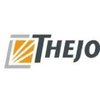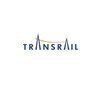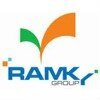Filter interviews by
Thejo Engineering Interview Questions and Answers
18 Interview questions
I am familiar with various materials used in engineering, including metals, polymers, ceramics, and composites.
Metals: Examples include steel, aluminum, and copper, known for their strength and conductivity.
Polymers: Common types are polyethylene and nylon, valued for their lightweight and corrosion resistance.
Ceramics: Materials like porcelain and alumina, recognized for their hardness and thermal resistance.
Comp...
Bearings are mechanical components that reduce friction between moving parts, enhancing efficiency and performance in machinery.
1. Ball Bearings: Commonly used in bicycles and electric motors.
2. Roller Bearings: Found in heavy machinery and automotive applications.
3. Thrust Bearings: Used in applications where axial loads are present, like in car transmissions.
4. Magnetic Bearings: Employed in high-speed applicati...
Reynolds number is a dimensionless quantity used in fluid mechanics to predict flow patterns in different fluid flow situations.
Reynolds number is calculated as the ratio of inertial forces to viscous forces in a fluid flow.
It helps determine whether the flow is laminar (smooth and orderly) or turbulent (chaotic and irregular).
Reynolds number is used in various engineering applications such as designing pipes, air...
Regular cleaning, inspection, and maintenance are necessary to keep the slurry tank in good condition.
Clean the tank regularly to prevent buildup of solids and debris.
Inspect the tank for any signs of damage or leaks.
Check the agitator and pump regularly to ensure they are functioning properly.
Maintain proper pH levels to prevent corrosion.
Replace any worn or damaged parts as needed.
Keep the tank covered to preven...
I will immediately stop the conveyor belt and assess the damage. Then, I will either repair or replace the damaged parts.
Stop the conveyor belt immediately
Assess the damage to determine the extent of repairs needed
Repair or replace the damaged parts
Ensure the conveyor belt is functioning properly before resuming operations
Before starting water pumps, certain checks and preparations need to be made.
Check the water level in the source tank
Ensure that the suction and discharge valves are open
Inspect the pump and motor for any visible damage or leaks
Prime the pump if necessary
Check the electrical connections and power supply
Start the pump and monitor for any abnormalities
Pulleys are simple machines that make work easier by changing the direction or magnitude of a force.
Fixed pulley
Movable pulley
Compound pulley
Block and tackle pulley
Jockey pulley
The take up pulley is responsible for maintaining tension in a conveyor belt.
The take up pulley is typically located at the end of a conveyor system.
It is used to adjust and maintain the tension of the conveyor belt.
By adjusting the position of the take up pulley, the slack in the belt can be controlled.
This ensures proper alignment and prevents slipping or sagging of the belt.
The take up pulley can be manually or...
Yes, a conveyor belt is a mechanical system used to transport materials from one location to another.
Conveyor belts are commonly used in industries such as manufacturing, mining, and logistics.
They consist of a continuous loop of material, usually made of rubber or metal, that moves along a series of rollers.
Conveyor belts can be powered by motors or operated manually.
They are designed to efficiently transport goo...
The snab pulley is a mechanical device used to change the direction of a belt or rope.
The snab pulley is typically used in various machines and systems to transmit power or force.
It is commonly found in engines, conveyor systems, and lifting equipment.
By changing the direction of the belt or rope, the snab pulley allows for the transfer of rotational motion or force.
It can also be used to create mechanical advanta...
Thejo Engineering Interview Experiences
20 interviews found
I appeared for an interview in Apr 2025, where I was asked the following questions.
- Q1. What is the principle of bucholtz relay
- Q2. Generator protections
- Q3. Transformer protections
- Q4. Breaker protections
- Q5. Explain about differential protection relay
HR Executive and Administration Executive Interview Questions & Answers
posted on 29 Apr 2025
I appeared for an interview in Mar 2025, where I was asked the following questions.
- Q1. Check system knowledge
- Q2. MBA syllabus related questions
- Q3. Statutory compliance related questions
I applied via Referral and was interviewed in Jun 2024. There was 1 interview round.
(3 Questions)
- Q1. What is Reynolds number
- Ans.
Reynolds number is a dimensionless quantity used in fluid mechanics to predict flow patterns in different fluid flow situations.
Reynolds number is calculated as the ratio of inertial forces to viscous forces in a fluid flow.
It helps determine whether the flow is laminar (smooth and orderly) or turbulent (chaotic and irregular).
Reynolds number is used in various engineering applications such as designing pipes, aircraft...
- Q2. Mm to micron
- Q3. Manufacturing process
Interview Preparation Tips
I applied via Walk-in and was interviewed in Jan 2024. There were 2 interview rounds.
(6 Questions)
- Q1. Any from electrical question
- Q2. VFD variable frequency drive
- Q3. PLC :- module PLC
- Q4. I/O MODULE CARDS
- Q5. Compact plc wiring
- Q6. All type Motor's starters
- Ans.
Motor starters are devices used to start and stop motors, ensuring smooth operation and protection against overloads.
Types of motor starters include direct on-line starters, star-delta starters, soft starters, and variable frequency drives.
Motor starters help control the starting current and protect the motor from damage.
Examples of motor starters include Allen-Bradley motor starters, Siemens motor starters, and Schnei...
(2 Questions)
- Q1. Panel power wiring and control wiring
- Q2. DOL , STAR DELTA STARTER
I appeared for an interview in Sep 2024, where I was asked the following questions.
- Q1. How many types of bearing?
- Ans.
Bearings are mechanical components that reduce friction between moving parts, enhancing efficiency and performance in machinery.
1. Ball Bearings: Commonly used in bicycles and electric motors.
2. Roller Bearings: Found in heavy machinery and automotive applications.
3. Thrust Bearings: Used in applications where axial loads are present, like in car transmissions.
4. Magnetic Bearings: Employed in high-speed applications, ...
- Q2. Types of conveyor belt and hot joint and cold joint describe

(4 Questions)
- Q1. 1. What is your responsibility as a Chp desk engineer.
- Ans.
As a CHP desk engineer, I ensure efficient operation, troubleshooting, and support for CHP systems and related technologies.
Monitor and analyze CHP system performance to ensure optimal efficiency.
Provide technical support and troubleshooting for system issues, such as identifying faults in the generator or control systems.
Coordinate maintenance schedules and ensure compliance with safety regulations.
Collaborate with ot...
- Q2. How to handle manpower
- Q3. If you have not sufficient manpower then how to run system smoothly
- Q4. Expected salary
(1 Question)
- Q1. Tell me about your self
I appeared for an interview before Jun 2024, where I was asked the following questions.
- Q1. What is torque
- Ans.
Torque is a measure of the rotational force applied to an object, causing it to rotate around an axis.
Torque is calculated as the product of force and the distance from the pivot point (Torque = Force x Distance).
It is measured in units such as Newton-meters (Nm) or foot-pounds (ft-lb).
An example of torque is when using a wrench to tighten a bolt; the longer the wrench, the more torque is applied.
In vehicles, the engin...
- Q2. What are the material which I know ?
- Ans.
I am familiar with various materials used in engineering, including metals, polymers, ceramics, and composites.
Metals: Examples include steel, aluminum, and copper, known for their strength and conductivity.
Polymers: Common types are polyethylene and nylon, valued for their lightweight and corrosion resistance.
Ceramics: Materials like porcelain and alumina, recognized for their hardness and thermal resistance.
Composite...
I appeared for an interview before Jan 2024.
(2 Questions)
- Q1. What is safety Safety officee responsibility
- Ans.
Safety is the practice of preventing accidents, injuries, and other potential hazards in the workplace.
Identifying potential hazards in the workplace
Implementing safety protocols and procedures
Training employees on safety practices
Conducting regular safety inspections and audits
Investigating accidents and near misses to prevent future incidents
- Q2. Factort act
Interview Preparation Tips
- Safety diploma
- Bachlor of Arts
- SR SECONARY SCHOOL
I applied via Walk-in and was interviewed in Mar 2022. There were 2 interview rounds.

(3 Questions)
- Q1. Do you have any idea about conveyor belt ?
- Ans.
Yes, a conveyor belt is a mechanical system used to transport materials from one location to another.
Conveyor belts are commonly used in industries such as manufacturing, mining, and logistics.
They consist of a continuous loop of material, usually made of rubber or metal, that moves along a series of rollers.
Conveyor belts can be powered by motors or operated manually.
They are designed to efficiently transport goods or...
- Q2. What is the function of snab Pulley ?
- Ans.
The snab pulley is a mechanical device used to change the direction of a belt or rope.
The snab pulley is typically used in various machines and systems to transmit power or force.
It is commonly found in engines, conveyor systems, and lifting equipment.
By changing the direction of the belt or rope, the snab pulley allows for the transfer of rotational motion or force.
It can also be used to create mechanical advantage, s...
- Q3. What is function of take up pulley ?
- Ans.
The take up pulley is responsible for maintaining tension in a conveyor belt.
The take up pulley is typically located at the end of a conveyor system.
It is used to adjust and maintain the tension of the conveyor belt.
By adjusting the position of the take up pulley, the slack in the belt can be controlled.
This ensures proper alignment and prevents slipping or sagging of the belt.
The take up pulley can be manually or auto...
Interview Preparation Tips
I applied via Company Website and was interviewed in May 2022. There was 1 interview round.
(2 Questions)
- Q1. Electrical engineering
- Q2. Electrical maintenance work questions
Interview Preparation Tips
Top trending discussions






Thejo Engineering Interview FAQs
The duration of Thejo Engineering interview process can vary, but typically it takes about less than 2 weeks to complete.
Tell us how to improve this page.
Thejo Engineering Interviews By Designations
- Thejo Engineering Electrical Engineer Interview Questions
- Thejo Engineering Junior Design Engineer Interview Questions
- Thejo Engineering Mechanical Engineer Interview Questions
- Thejo Engineering Engineer Interview Questions
- Thejo Engineering Senior Operator Interview Questions
- Thejo Engineering Senior Electrical Engineer Interview Questions
- Thejo Engineering Resident Manager Interview Questions
- Thejo Engineering Electrician Interview Questions
- Show more
Interview Questions for Popular Designations
Overall Interview Experience Rating
based on 15 interview experiences
Difficulty level
Duration
Interview Questions from Similar Companies
Thejo Engineering Reviews and Ratings
based on 164 reviews
Rating in categories
|
Mechanical Engineer
42
salaries
| ₹2.3 L/yr - ₹6 L/yr |
|
Junior Engineer
26
salaries
| ₹2.7 L/yr - ₹3.5 L/yr |
|
Electrical Engineer
23
salaries
| ₹2.8 L/yr - ₹5.5 L/yr |
|
Senior Engineer
18
salaries
| ₹3.6 L/yr - ₹6.3 L/yr |
|
Senior Technician
17
salaries
| ₹1.7 L/yr - ₹4 L/yr |
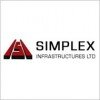
Simplex Infrastructures
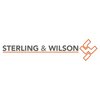
Sterling & Wilson

Aarvee Associates
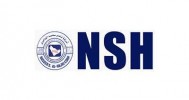
Nasser S. Al Hajri Corporation
- Home >
- Interviews >
- Thejo Engineering Interview Questions
